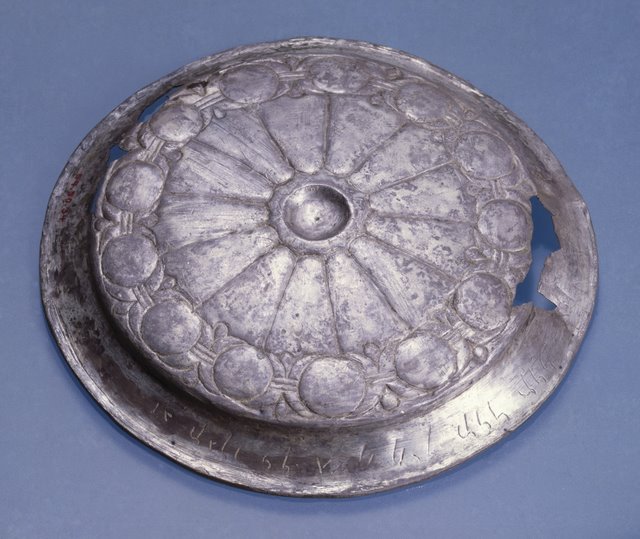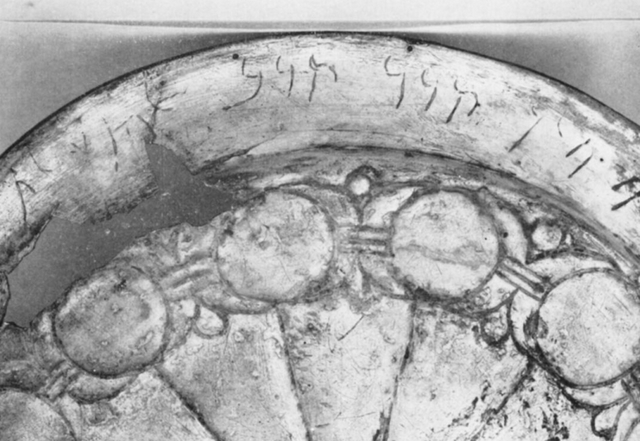Tel el-Maskhuta Libation Bowl, late 5th century BCE
“Geshem the Arab” Appears on a Ceremonial Bowl
When Sanballat the Horonite and Tobiah the Ammonite servant and Geshem the Arab heard, they mocked us and held us in contempt and said, “What is this that you are doing? Are you rebelling against the king? (Nehemiah 2-19)
Date- late 5th century BCE
Current Location- Brooklyn Museum
Language and Script- Aramaic; alphabetic
Biblical Verses- Gen. 25-13; Neh. 2-19; 6-1–6
General Information-
In the 1950s, the Brooklyn Museum acquired four silver libation bowls that were said to have been found at Tel el-Maskhuta, the site of an ancient shrine located in the eastern Nile Delta in northern Egypt. Each of the bowls is inscribed with the name of its donor, a description of the offering it contained, and the name of Hanilat, the North Arabian goddess for whom the offerings were meant. Based on paleographic analysis of the inscriptions as well as other factors, the bowls have been dated to the 5th century BCE.
Relevance to Ancient Israel- One of the Tel el-Maskhuta bowls was offered by Kainu son of Geshem. According to the Book of Ezra-Nehemiah, when Nehemiah led the rebuilding of Jerusalem’s walls, he was opposed by three prominent figures- Sanballat the Horonite, Tobiah the Ammonite servant, and Geshem the Arab. This latter figure is generally identified as the father of the Kainu on the bowl. The bowl’s inscription refers to Kainu as the “king of Kedar,” a position probably held by Geshem as well. The Hebrew Bible (Gen. 25-13; 1 Chr. 1-29; Isa. 21-16-17; 42-11; 60-7; Jer. 2-10; 49-28; Ps. 120-5; Song 1-5) as well as numerous Assyrian and Babylonian texts make mention of Kedar, which appears to have been an Arabian kingdom to the east and south of Judah. This bowl implies that at this time Kedar’s influence extended across the Sinai into northeastern Egypt as well. Nehemiah’s Geshem the Arab has also been identified in a contemporaneous Lihyanite inscription found at al-Ula in northwest Arabia (biblical Dedan). In later periods, the name Geshem is fairly common in northern Arabian inscriptions.
Circumstances of Discovery and Acquisition- The Brooklyn Museum acquired three of the bowls in 1954 and the fourth in 1957.






